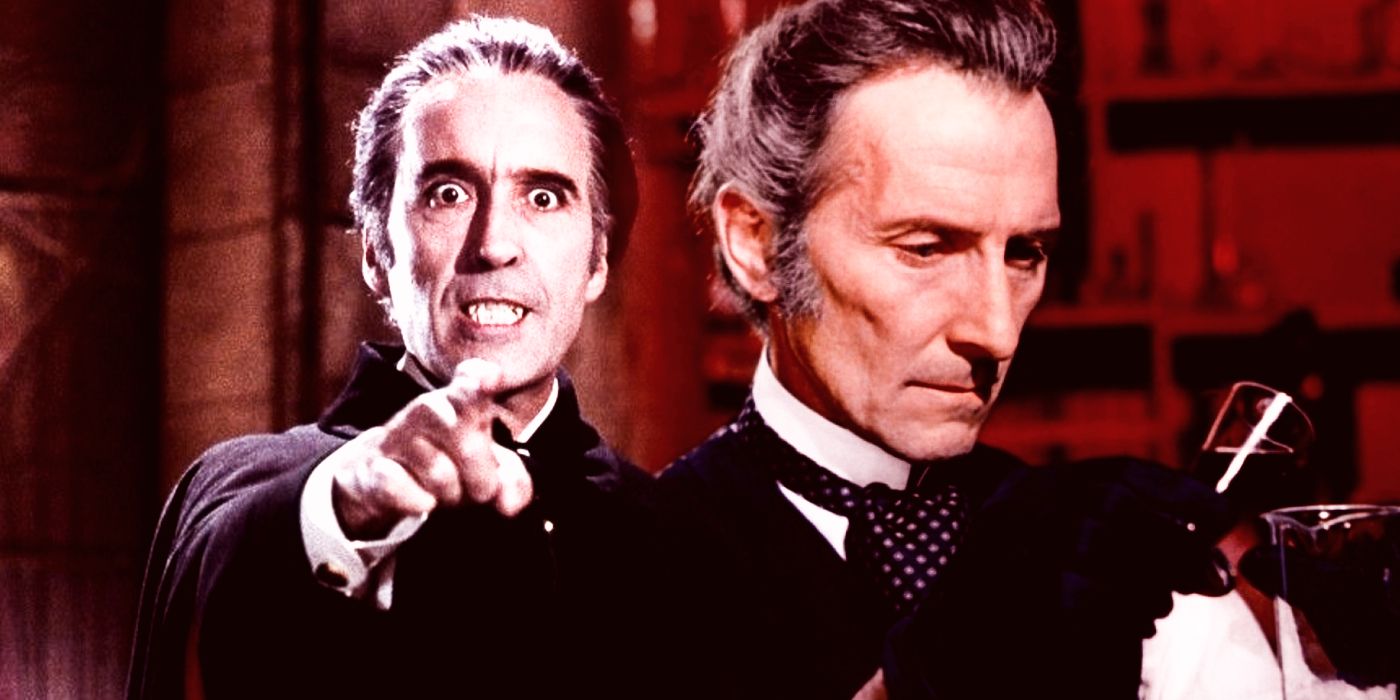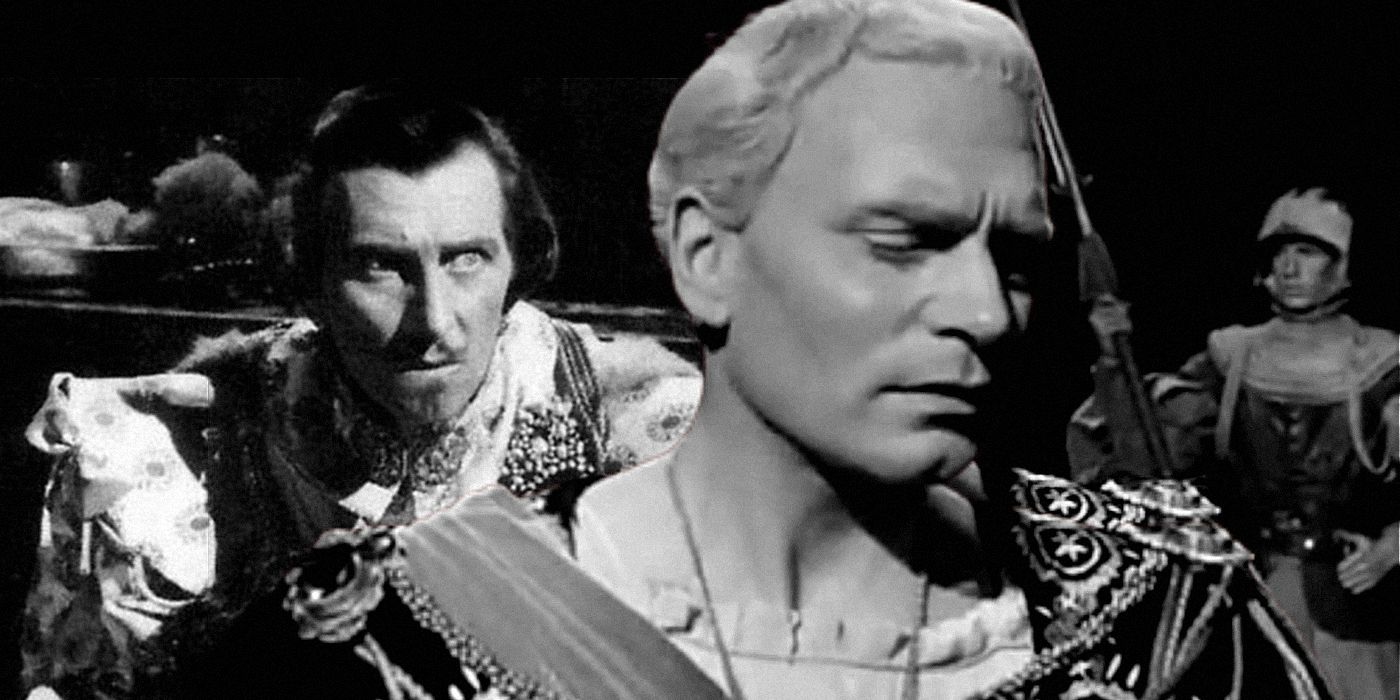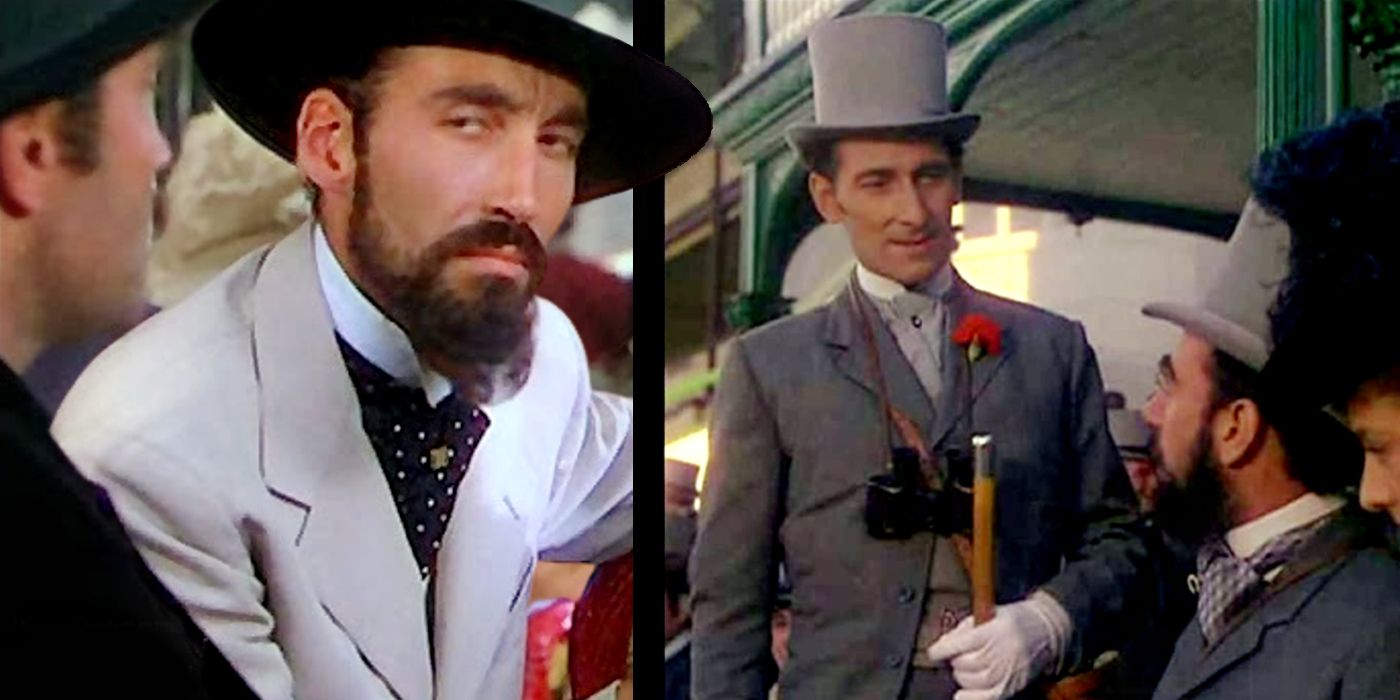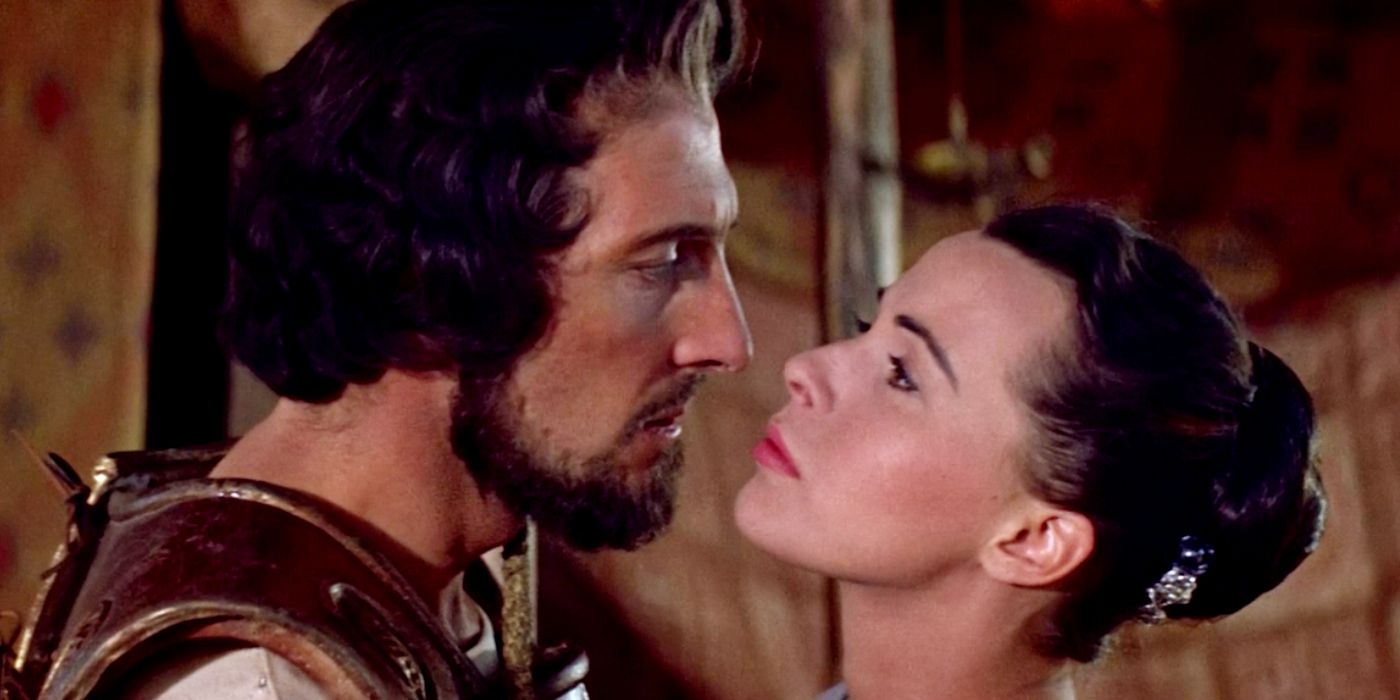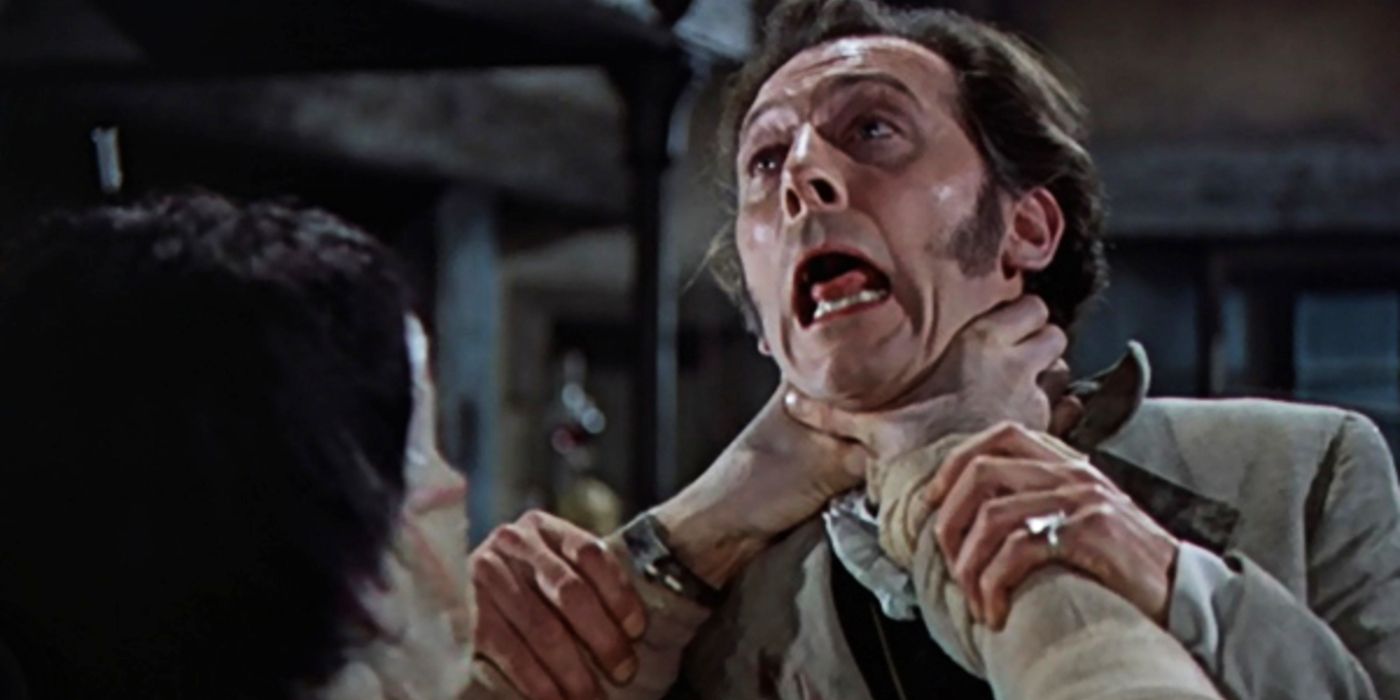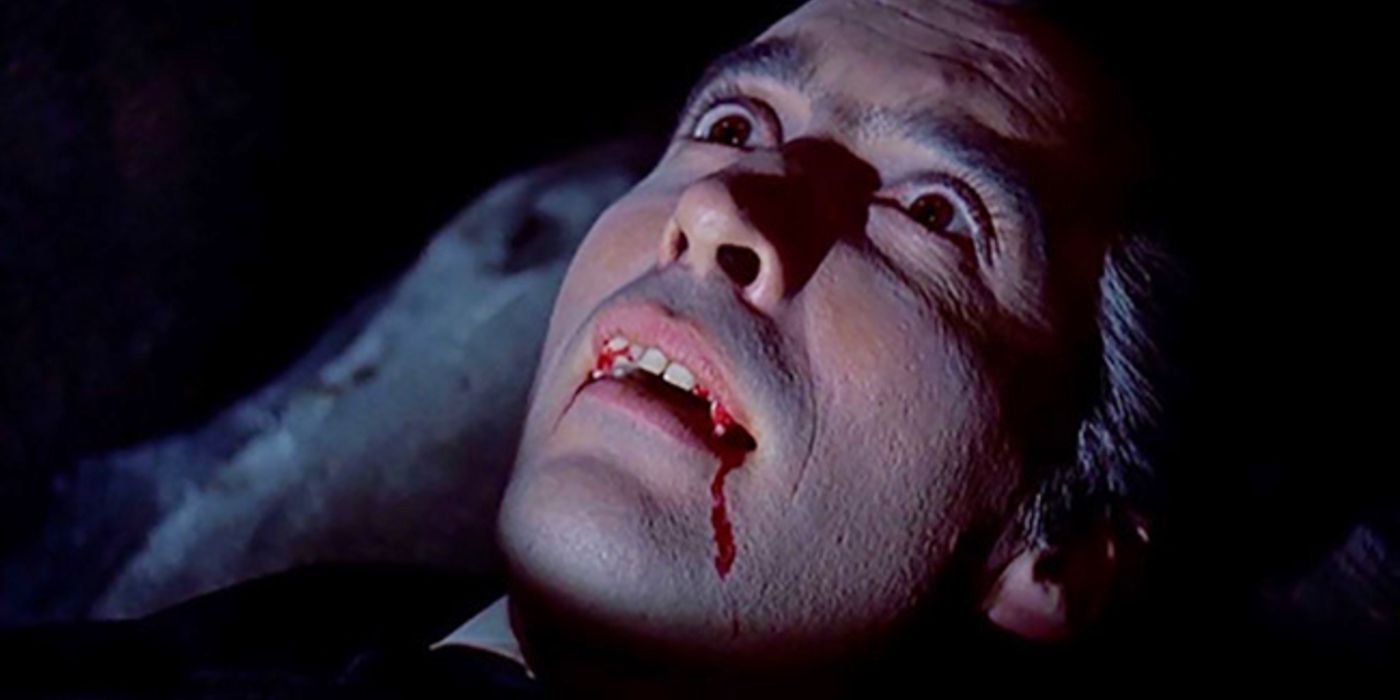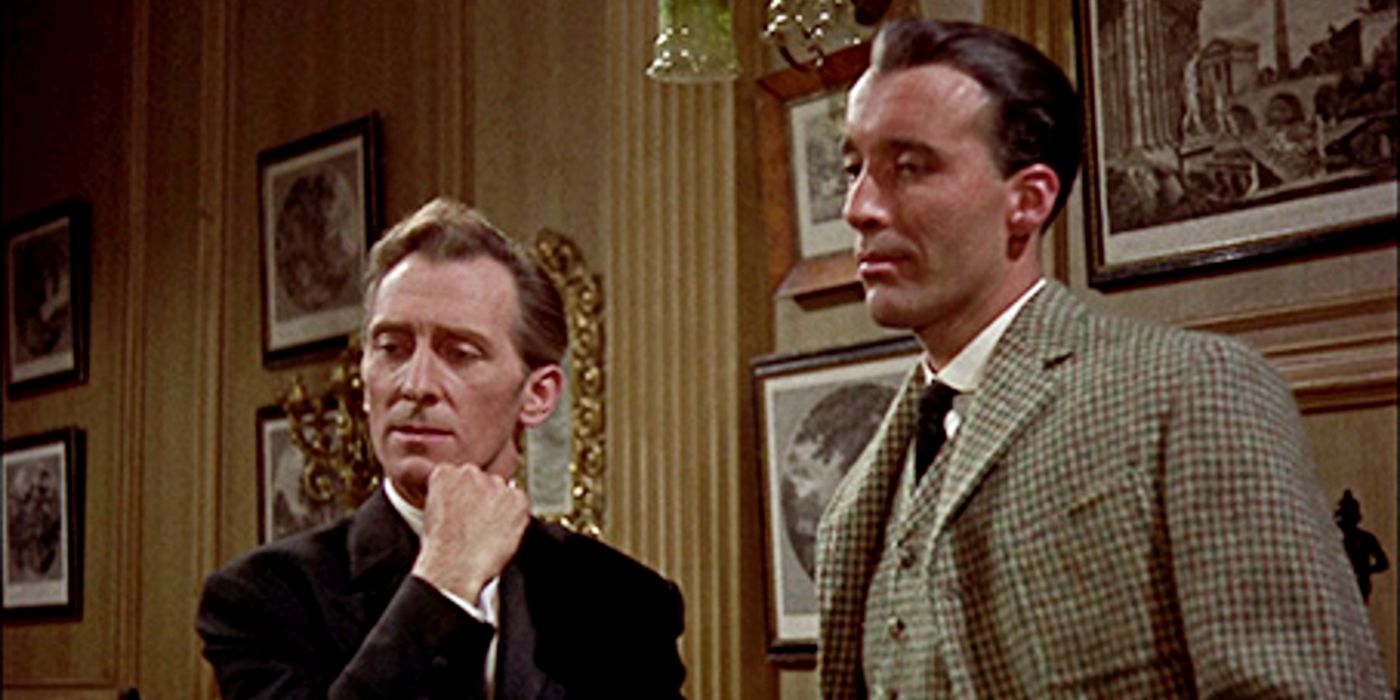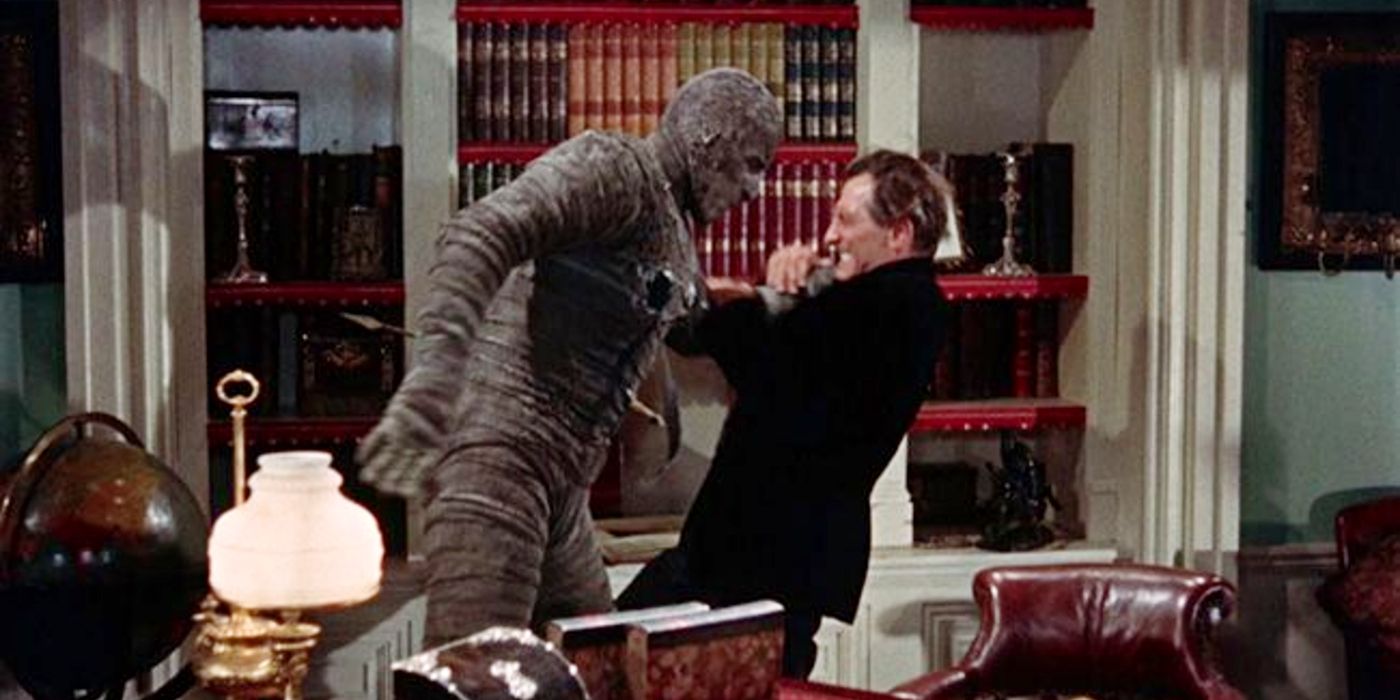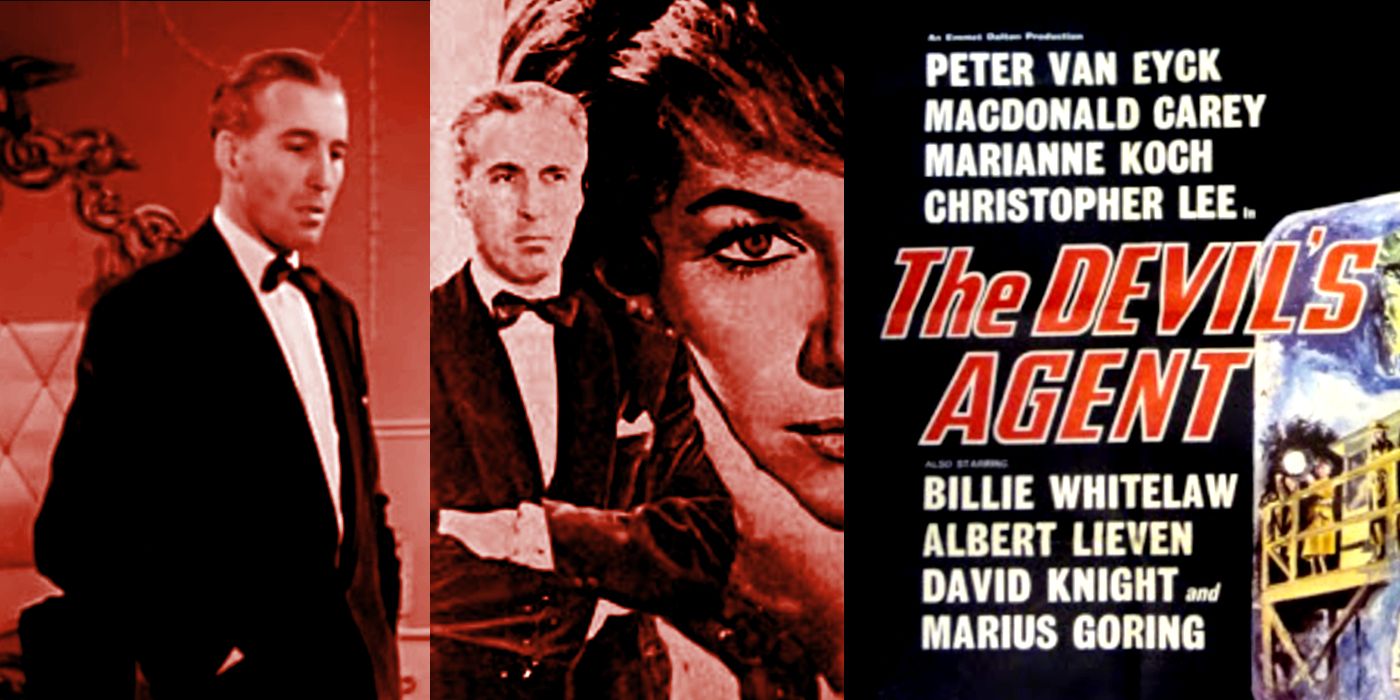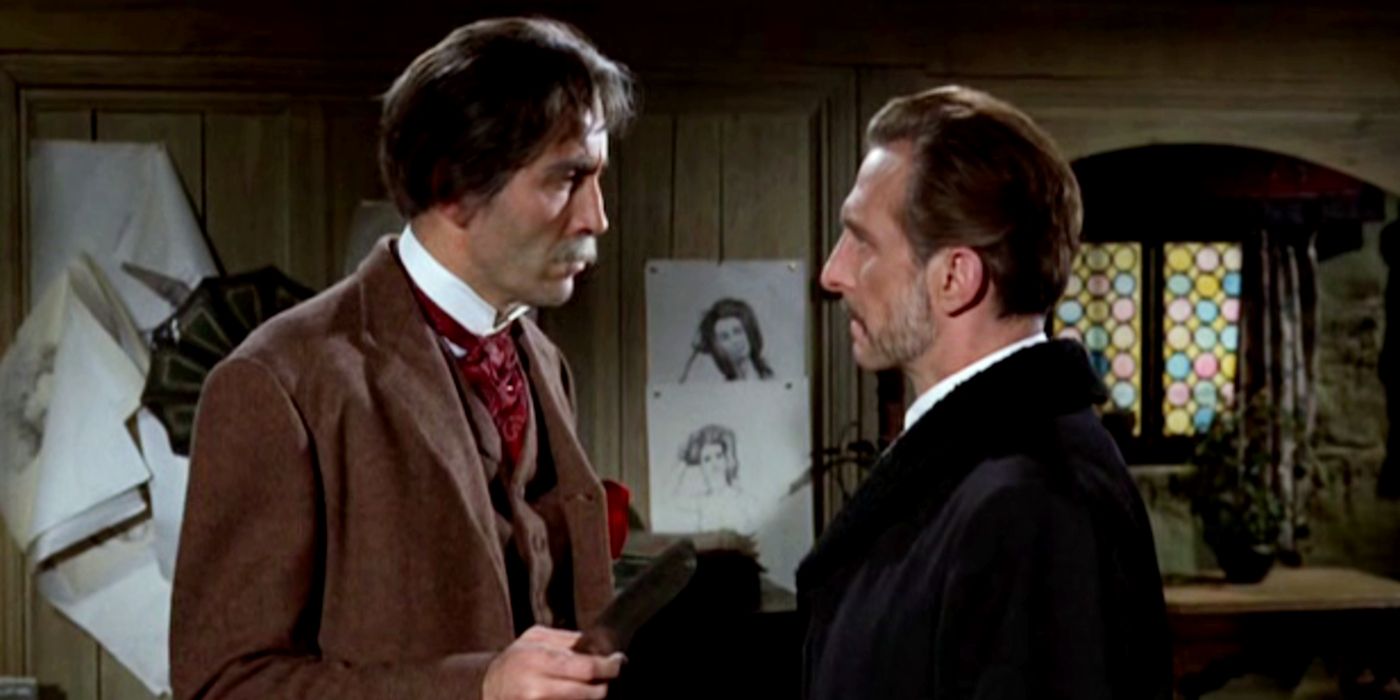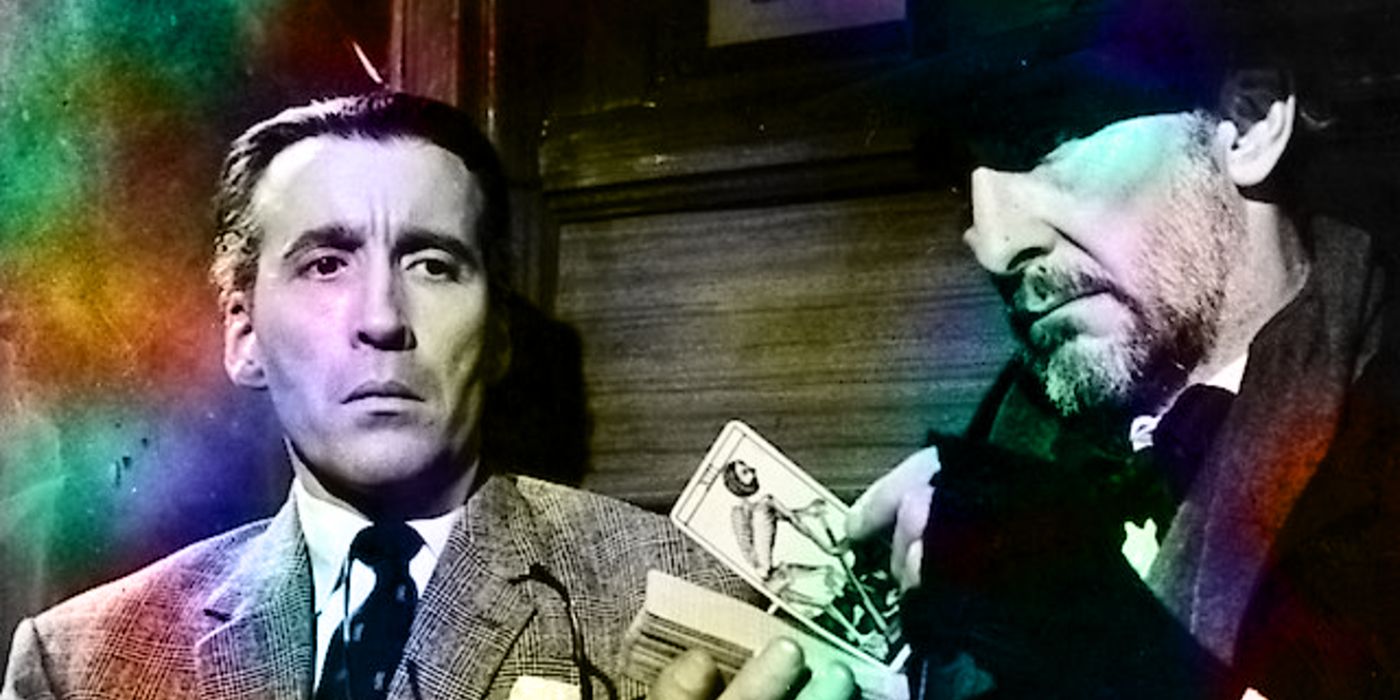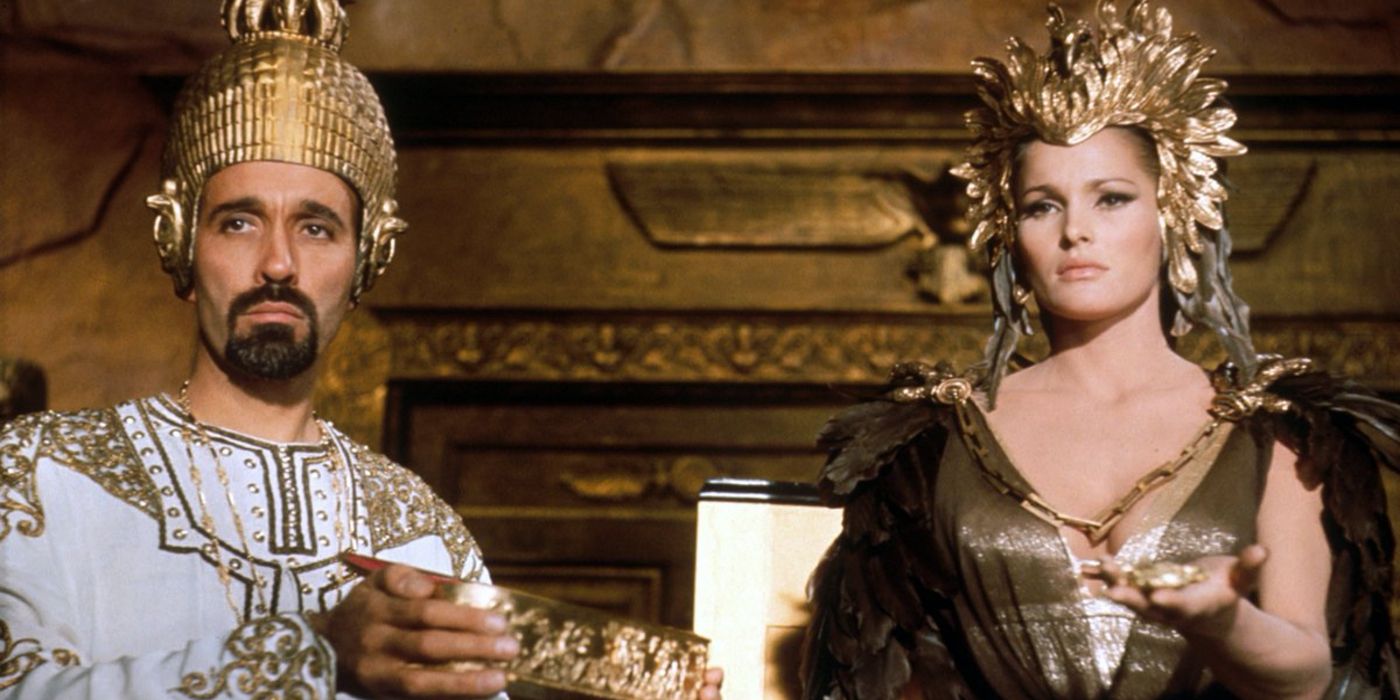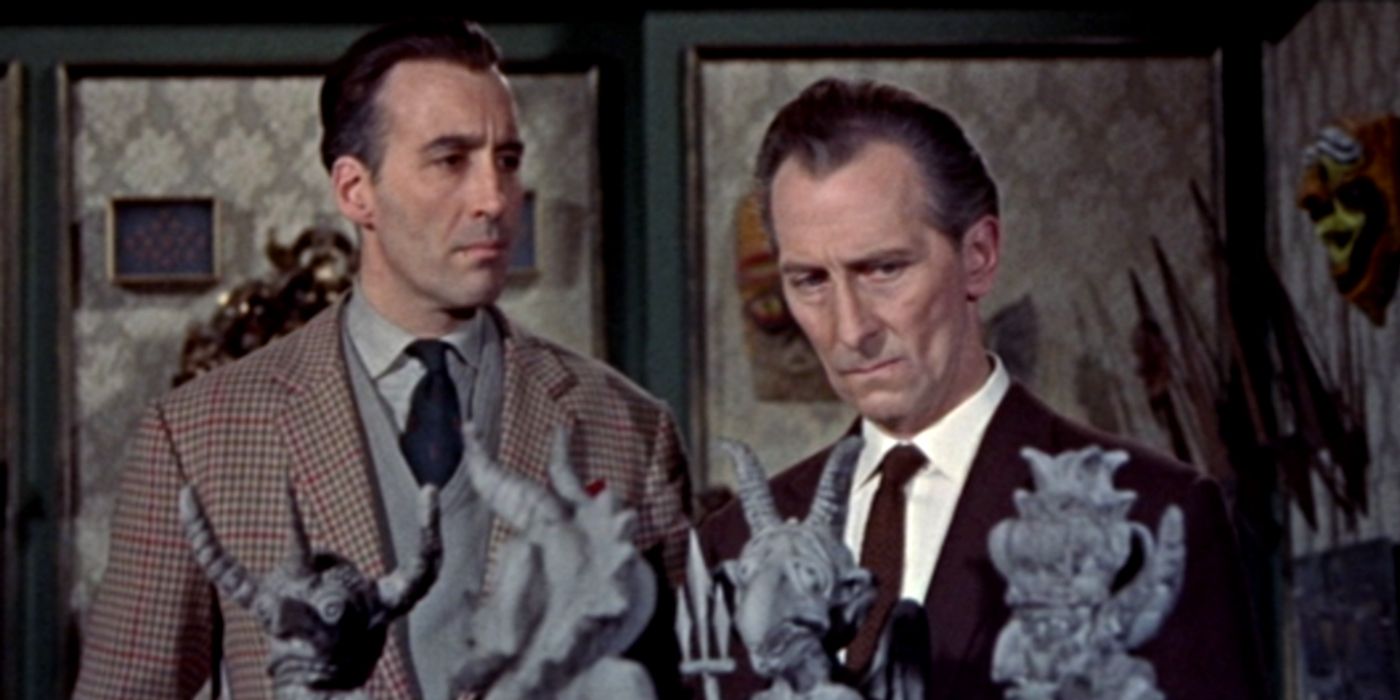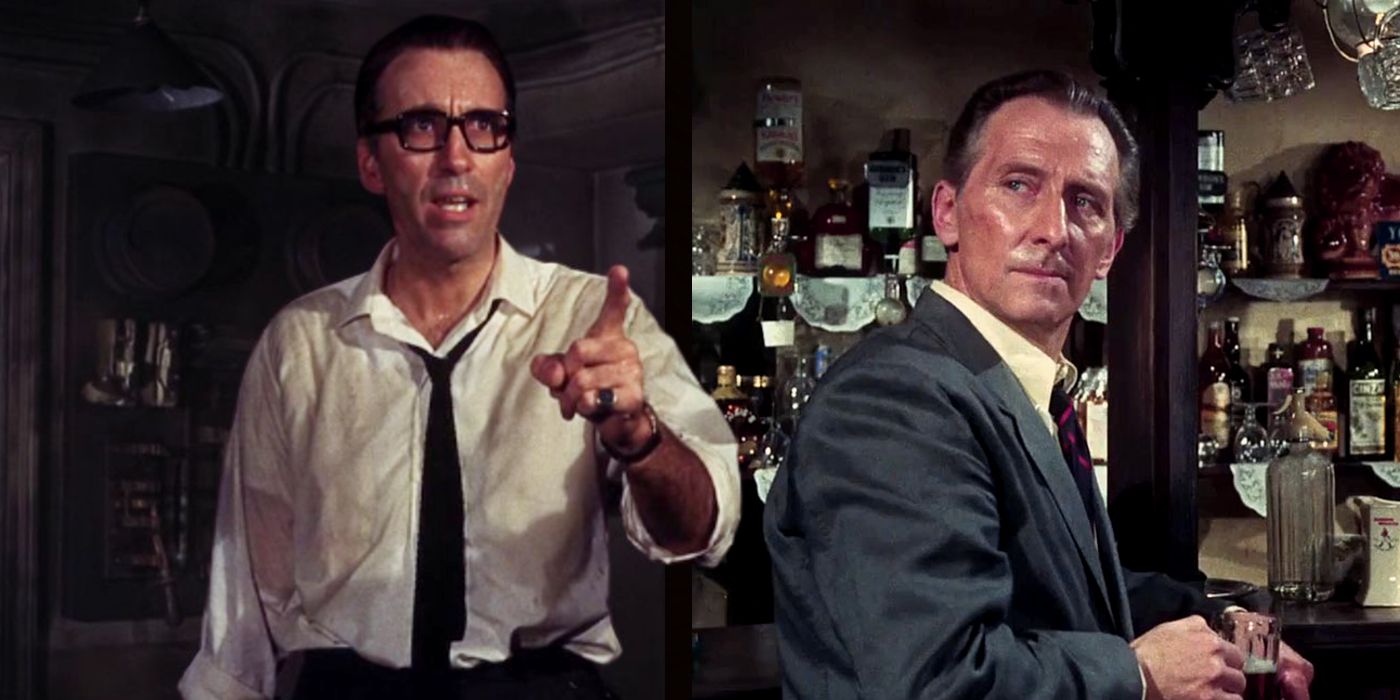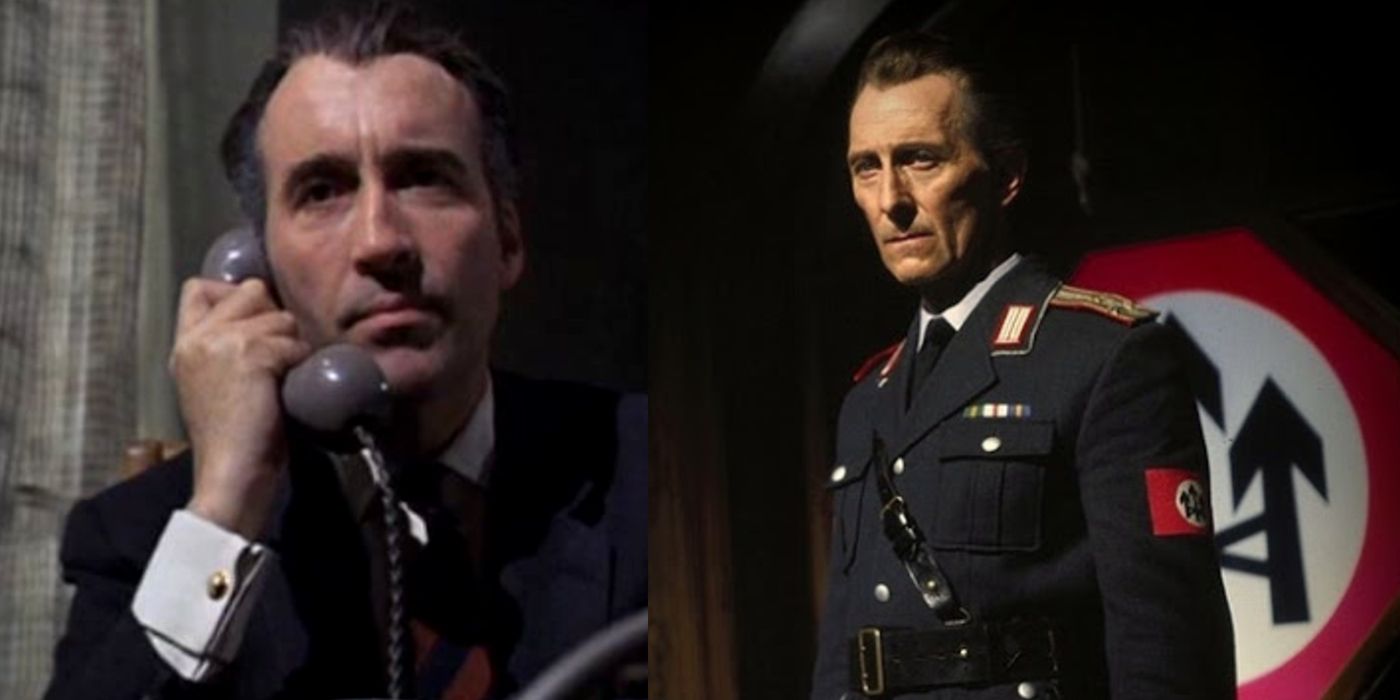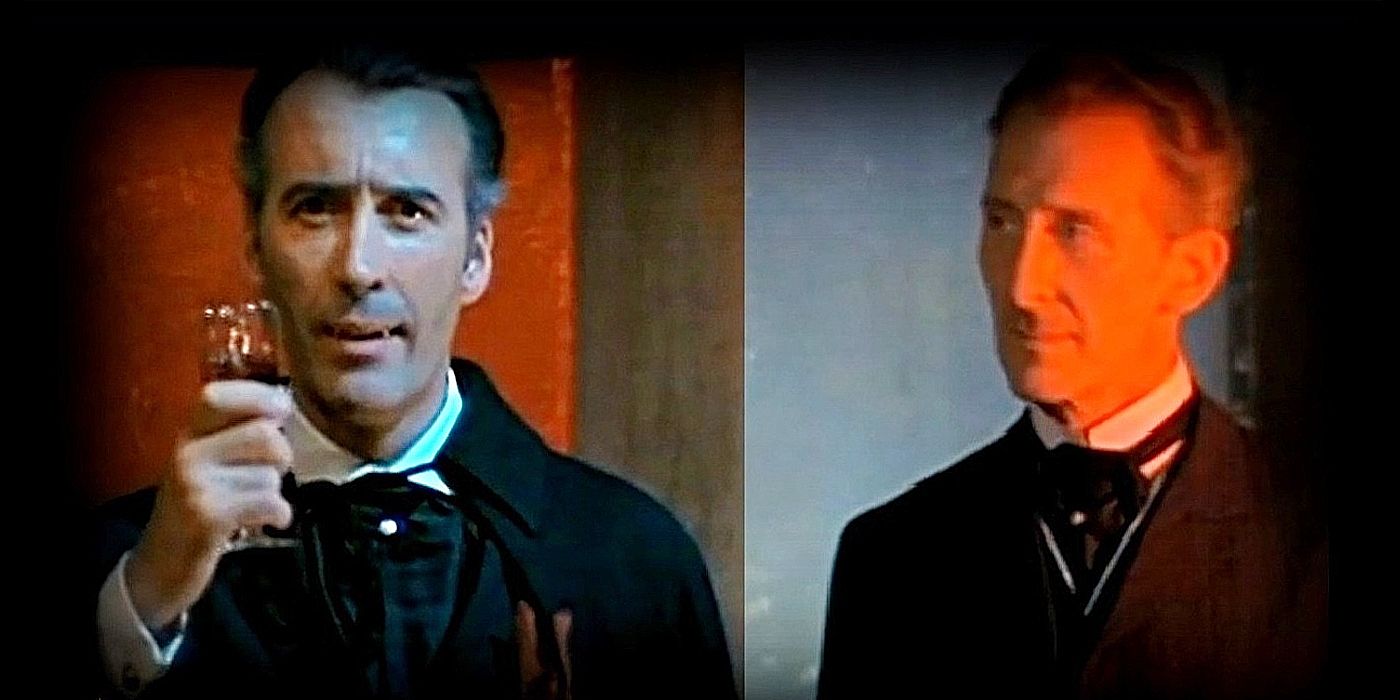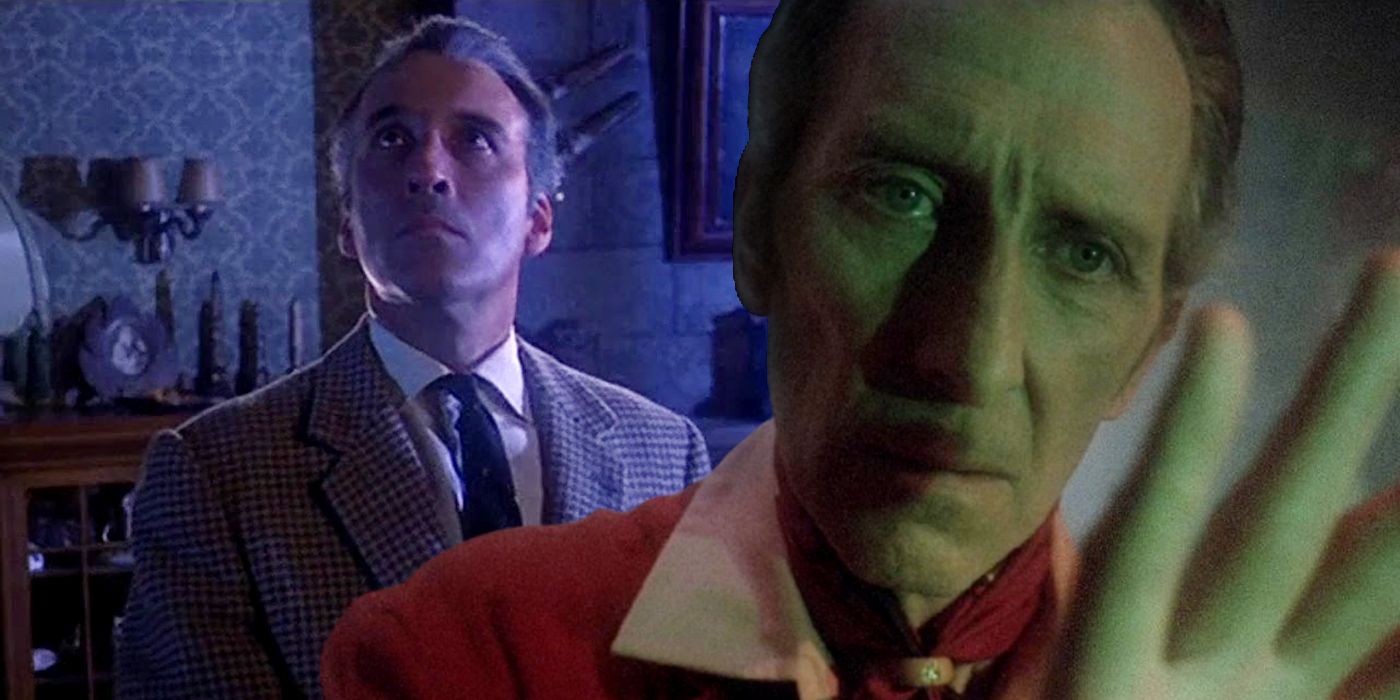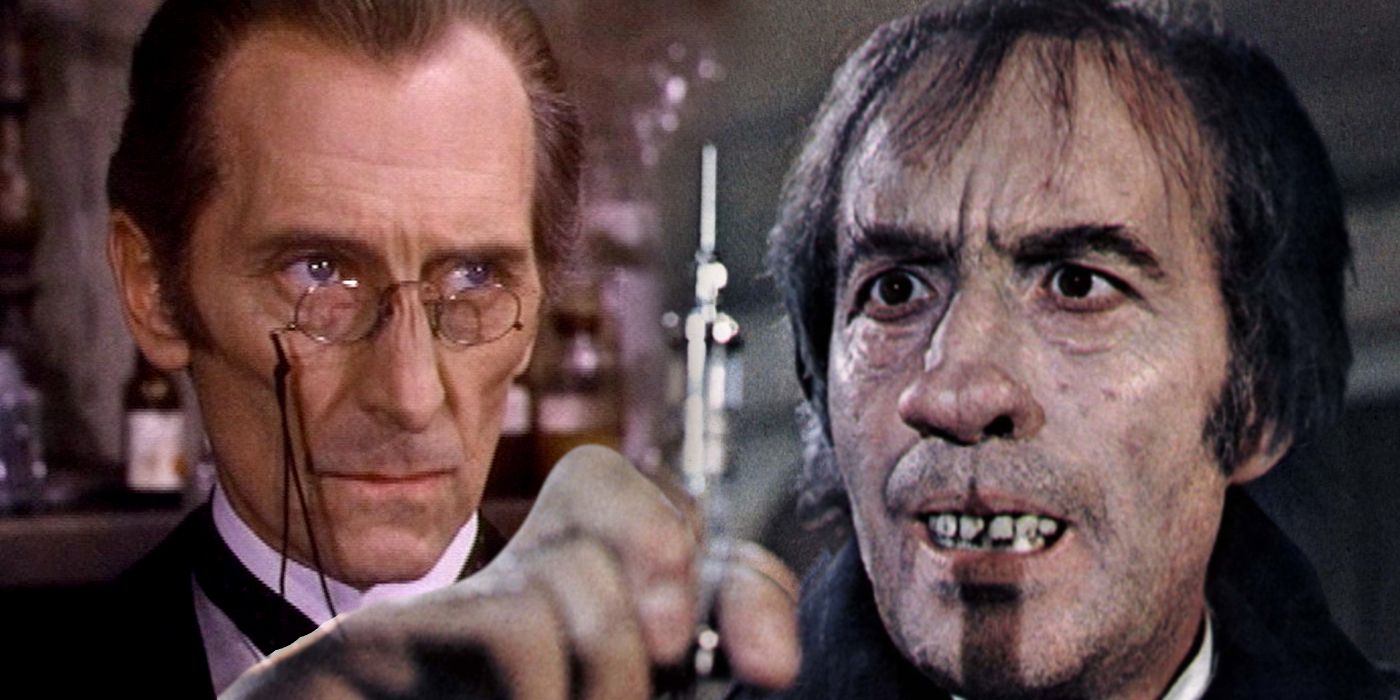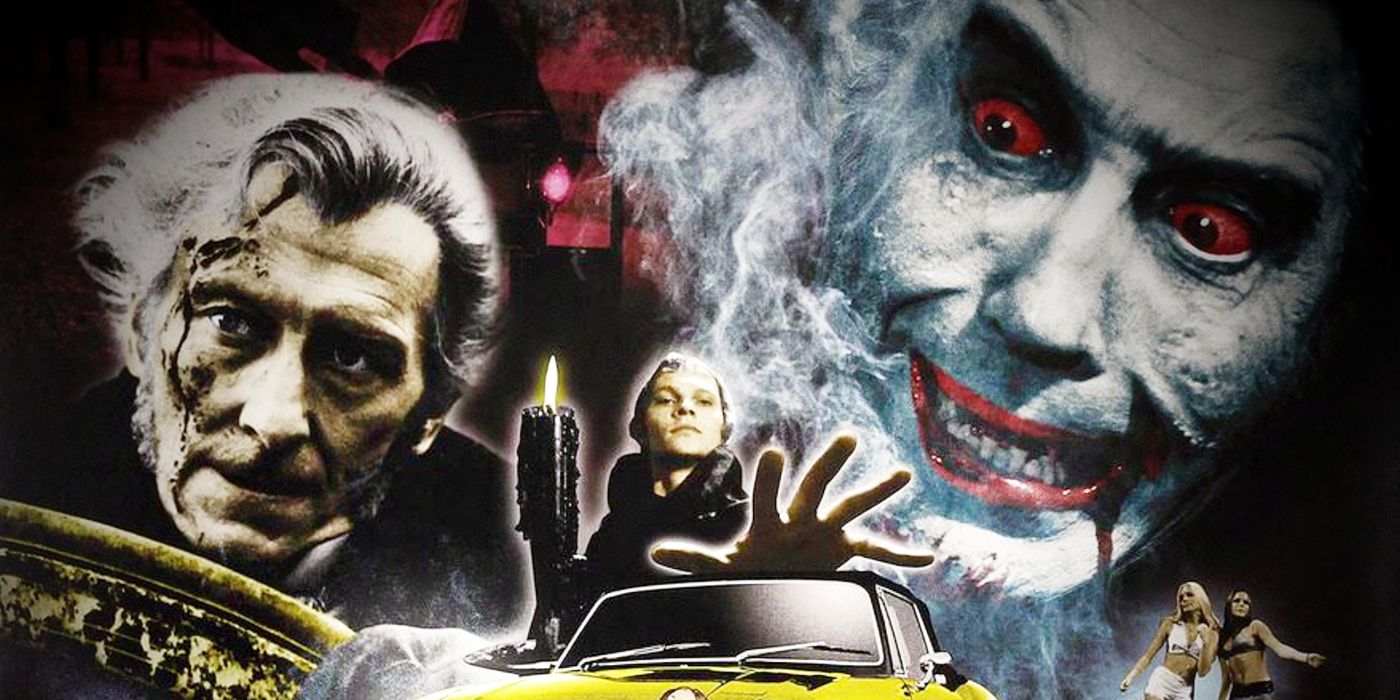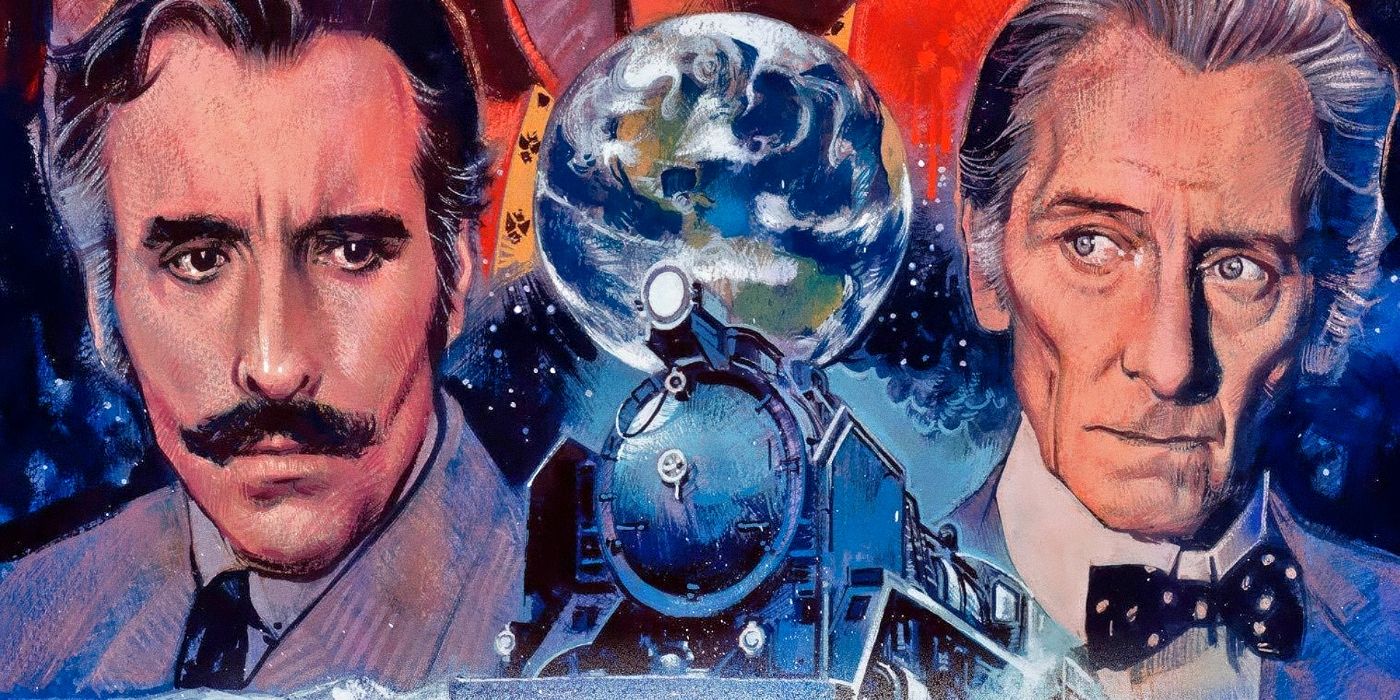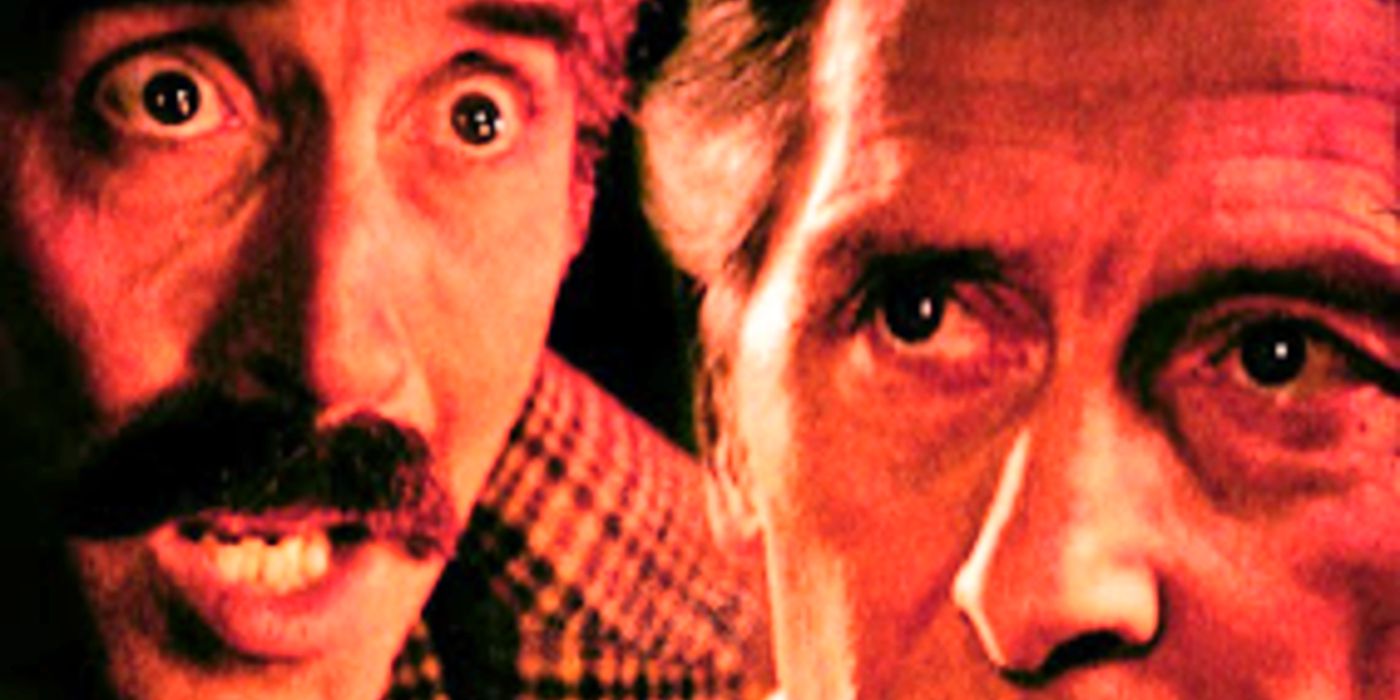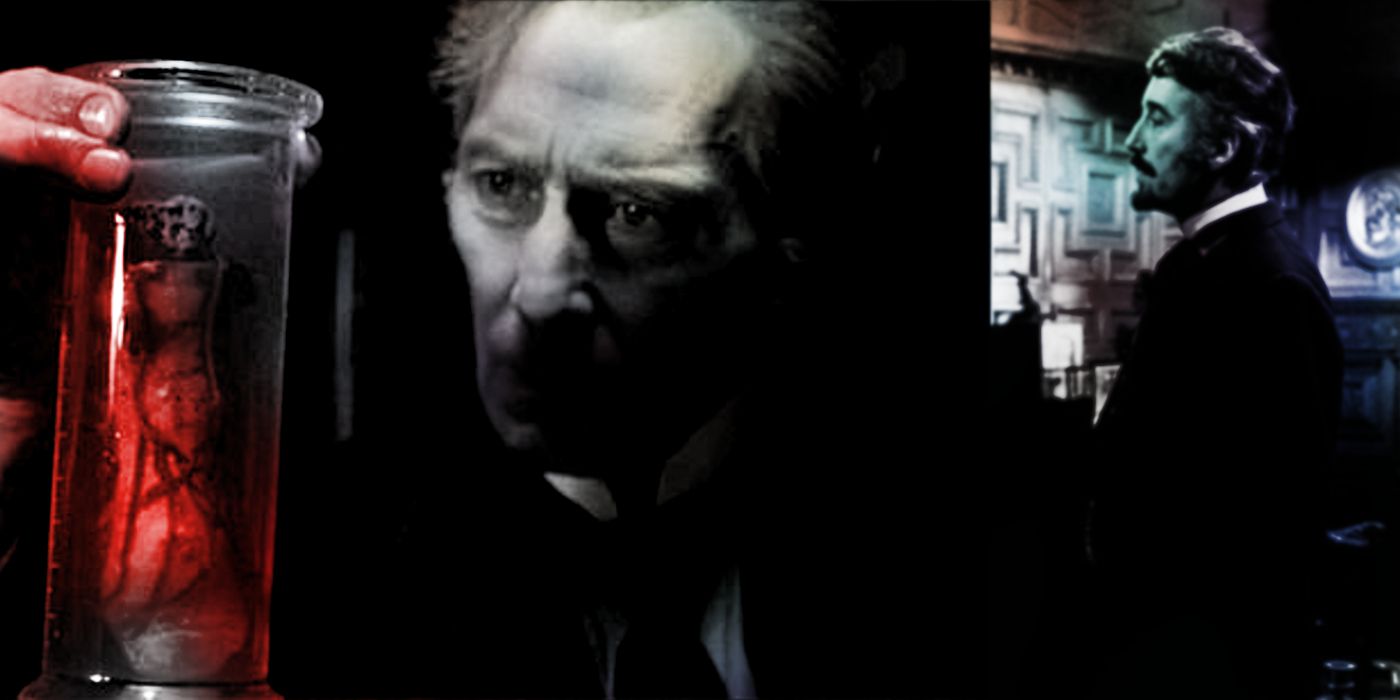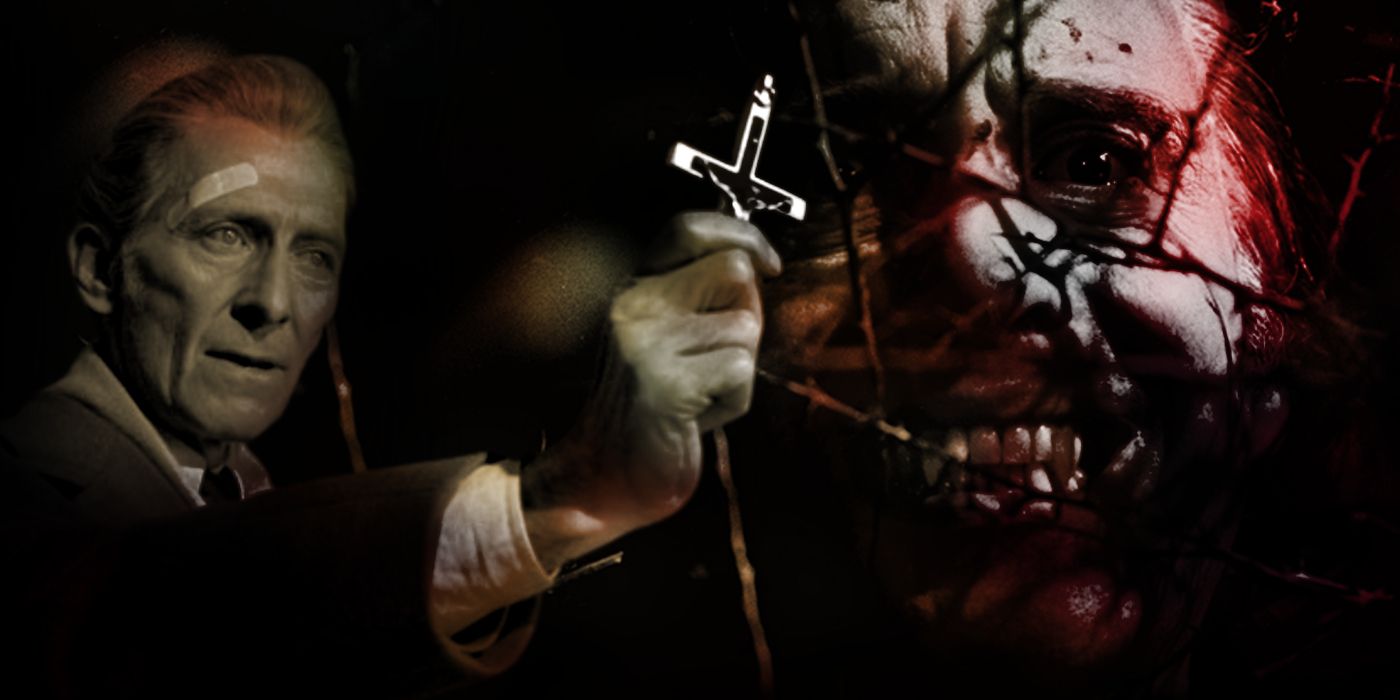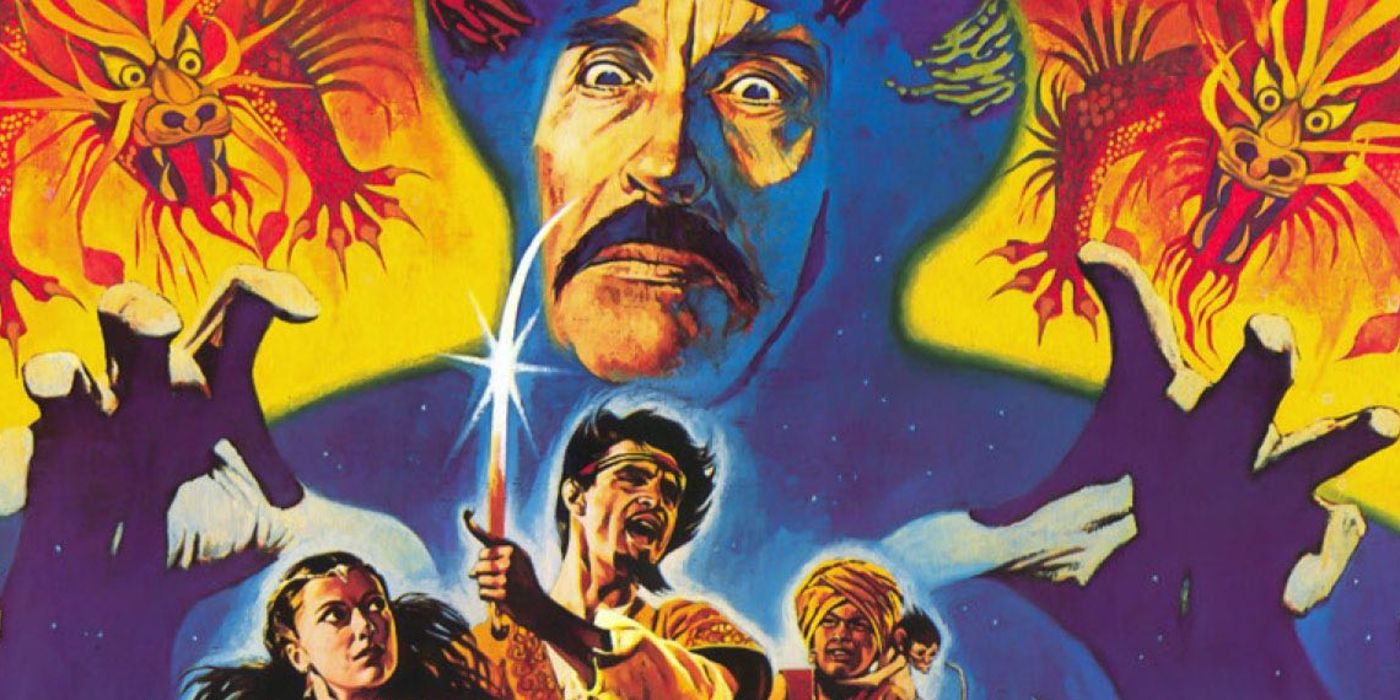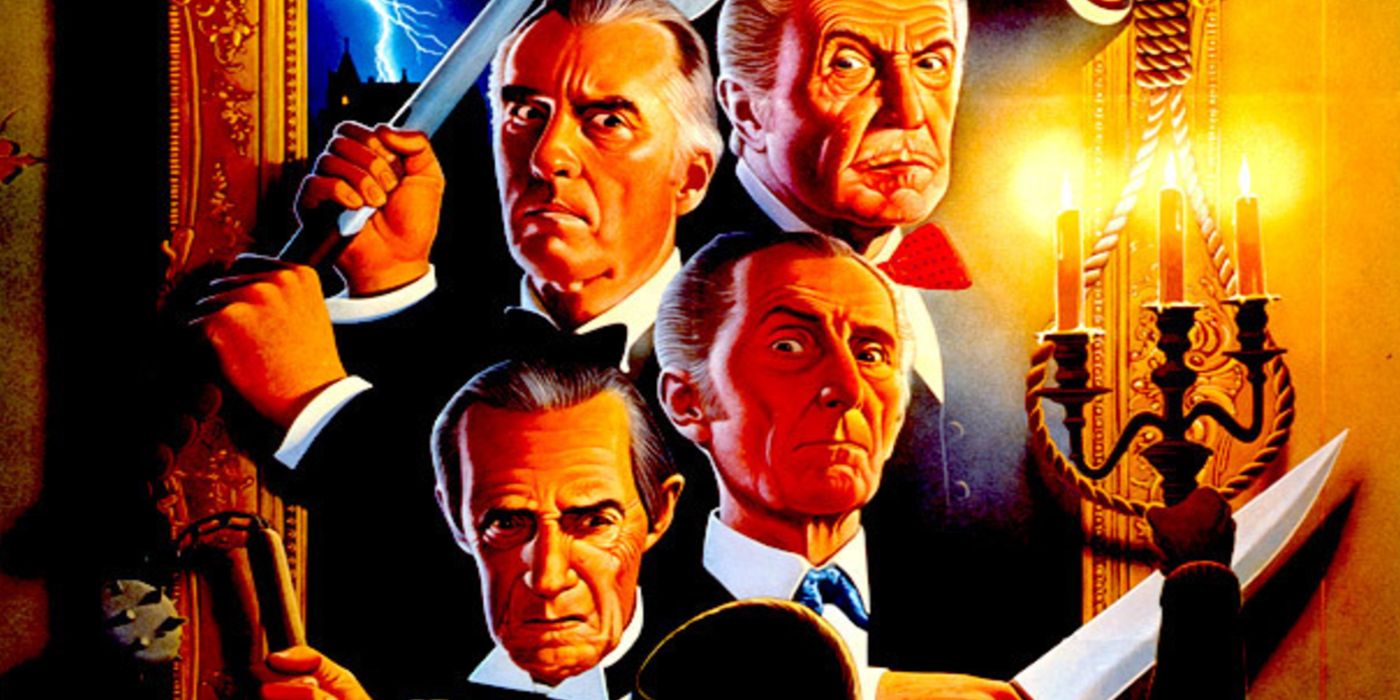Horror icons Christopher Lee and Peter Cushing starred in a number of movies together; here are all 24 films to feature the famous duo. Cushing, the older of the two stars, worked in the theatre before moving to Hollywood and kick-starting his movie career. Lee, an intelligence officer during the Second World War, transferred his skills to film acting upon returning to Britain and quickly crossed paths with Cushing - though their “double act” status didn’t emerge until they collaborated on Hammer Films’ British horror movie cycle.
Cushing became famous starring as Baron Frankenstein, while Lee became - for many - the definitive Count Dracula. That said, they often played supporting roles in each other's movies, with Cushing battling Lee’s Dracula as Van Helsing, and Lee playing the Creature in Cushing’s first Frankenstein film. While working on various Hammer productions, the pair forged a close friendship and - by the time the '70s rolled around - were a known cinematic entity, with movies marketed on their pairing alone.
While modern audiences might best recognize the duo from the Star Wars movies (Cushing played Grand Moff Tarkin in the original trilogy, while Lee played Count Dooku in the prequels), their shared filmography is like a franchise all its own. From Hamlet to House of the Long Shadows, Lee and Cushing acted together many times. Here are all 24 films to feature their pairing, explained.
Hamlet (1948)
Based on Shakespeare’s play, Laurence Olivier’s Hamlet tells the story of the Prince of Denmark who struggles over the decision to kill his uncle whom he suspects has murdered his father. Christopher Lee played a guard, though this role was uncredited, while Peter Cushing played Osric, a courtier who referees a duel. The film was the first British production to win the Academy Award for Best Picture but proved controversial amongst Shakespeare fans as Olivier cut almost two hours of the roughly four-hour play. That said, this was likely a plus for general audiences. Today, Hamlet is held in relatively high regard, but - as with all things Shakespeare - a lot of the praise feels forced and ego-based on the part of critics.
Moulin Rouge (1952)
Given the poster art and endorsement from dance legend Bob Fosse, it would be fair to assume that Christopher Lee and Peter Cushing would be appearing in a musical entitled Moulin Rouge by John Huston. That assumption would be wrong. Instead, the film is a biopic of artist Henri de Toulouse-Lautrec, based on a novel by Pierre La Mure, with very little of the movie’s runtime taking place in the titular Parisian cabaret. Lee played real-world artist Georges Seurat, while Cushing played Marcel de la Voisier - a fictional character. Though Moulin Rouge was both a financial and critical hit in its day, the film has since been viewed as rather boring, aside from a few striking dance sequences.
Alexander the Great (1956)
Robert Rossen’s Alexander the Great, a historical epic, starred Richard Burton in the title role and tells the story of the king’s life and military conquests. Christopher Lee voiced Nectenabus, dubbing over Helmut Dantine’s physical performance, while Peter Cushing played Memnon - a Greek military commander and rival to Alexander. Like his role in Hamlet, Lee’s work went uncredited. While praised for its spectacle and epic scope, Alexander the Great was considered by a number of critics to be bloated and repetitive. Nowadays, Burton is often said to be miscast in the title role, though the film certainly boosted Cushing’s career.
The Curse of Frankenstein (1957)
Terence Fisher’s The Curse of Frankenstein is a movie full of cinematic firsts: Hammer’s first color horror film, Peter Cushing’s first leading role in a movie, and his first time acting in the same scenes as Christopher Lee. Loosely based on Mary Shelley’s novel, the film tells the story of Victor Frankenstein - an unorthodox scientist who brings a creature to life, only to have it turn on him in the process. Cushing played Frankenstein (and would go on to reprise the role in five other Hammer films), while Lee played the Creature. While derided by a lot of British critics for being too graphic, critics in the USA seemed more attuned to Hammer’s efforts, and The Curse of Frankenstein has gone on to achieve a very respected position in the horror movie canon.
Horror of Dracula (1958)
The first film in Hammer’s Dracula series, Horror of Dracula, starred Cushing and Lee in, arguably, their most famous roles as Doctor Van Helsing and Count Dracula, respectively. Loosely based on Bram Stoker’s novel and, again, directed by Terence Fisher, the film tells the story of Van Helsing hunting Dracula down after the villain begins to target a vampire-hunter’s family. Horror of Dracula succeeded both financially and critically, was praised for bringing out the sexual themes of Stoker’s work, and cemented Cushing and Lee as an iconic horror pairing. To this day, the film is commonly cited amongst the best Dracula movies of all time.
The Hound of the Baskervilles (1959)
Another Hammer joint, Terrence Fisher’s The Hound of the Baskervilles saw Cushing and Lee reunite in the first color adaptation of Sir Arthur Conan Doyle’s classic detective novel. Cushing, of course, played Sherlock Holmes, while Lee played Sir Henry Baskerville - heir to the Baskerville fortune. The Hounds of the Baskervilles story has been adapted many times, but Cushing and Lee's performances are timeless. Given Hammer’s predilection towards franchise-building, it’s odd that they didn’t produce a whole string of Sherlock movies, though the success of their monster-based horror movies was likely to blame. That said, Lee and Cushing would go on to star in several unrelated Holmes productions across film and TV.
The Mummy (1959)
Mirroring their pairing in The Curse of Frankenstein, Hammer’s The Mummy (another Terence Fisher picture) saw Cushing and Lee portray John Banning, an archeologist, and Kharis, the titular mummy, respectively. While Hammer had made previous efforts to distance their horror franchises from the Universal Monster cycle, The Mummy was clearly based on the Universal series - borrowing plot elements and characters from those earlier films. Again, the gothic atmosphere was roundly praised, and The Mummy kick-started yet another Hammer franchise, with three more movies produced - though neither Cushing nor Lee was involved in any of the sequels.
The Devil’s Agent (1962)
John Paddy Carstairs’ The Devil’s Agent, based on a novel by Hans Habe, tells the story of a double agent in Germany during the Cold War. Christopher Lee appears as Baron von Staub, the agent’s friend before the war, and would have been joined by Peter Cushing had the actor’s scenes not been cut from the finished film. Ultimately, The Devil’s Agent got lost amid glitzier spy movies and is little remembered today as anything other than a rather pedestrian espionage flick.
The Gorgon (1964)
Another Hammer movie, Terrence Fisher’s The Gorgon tells the story of the titular monster, terrorizing a village in Europe by turning its inhabitants to stone. Lee and Cushing starred as Professor Karl Meister and Dr. Namaroff, respectively. A then-modern reimagining of the Greek Medusa myth, The Gorgon has become something of a cult classic - respected for introducing a female monster to Hammer’s rather male-centric pantheon, though Lee and Cushing don’t share very much screen-time on the whole.
Dr. Terror’s House of Horrors (1965)
Dr. Terror’s House of Horrors, directed by Freddie Francis, was the first film in Amicus Productions’ famous anthology horror cycle. Peter Cushing starred as the narrator, Dr. Schreck (his surname is German for “terror”), and guided the audience through five different horror stories. The fourth segment, “Disembodied Hand”, starred Christopher Lee as an art critic, haunted by the severed hand of a painter whose life he destroyed. The film is often hailed by modern critics as an underrated gem, taken for granted during the era in which it was made. Cushing would go on to star in five of Amicus’s six spiritual sequels to Dr. Terror’s House of Horrors, while Lee only appeared once more in the series.
She (1965)
While The Gorgon saw Hammer draw focus on a female monster, Robert Day’s She - based on the novel by H. Rider Haggard - was the company’s first time building a movie around a female star. Ursula Andress (who launched to stardom after appearing in the first James Bond film, Dr. No) played Ayesha - the immortal ruler of a lost realm - whose domain is discovered by a group of archeologists. Christopher Lee played Billali, Ayesha’s priest, while Peter Cushing played Professor Holly - the main archeologist. While the grandeur of She was generally praised, looking more expensive than other Hammer movies, it’s often viewed as a bit of a slog by modern critics.
The Skull (1965)
Another Amicus production, also directed by Freddie Francis, The Skull starred Peter Cushing as Dr. Maitland - an occult collector who comes into possession of the Marquis de Sade’s skull and quickly falls under its sinister spell. Christopher Lee appears as Sir Matthew Phillips, the skull’s previous owner, and is billed as a “guest star” in the credits. Sade’s descendants objected to the production, which originally used the nobleman’s name in the title, and took legal action against the film. Critically, The Skull tends to receive middle-of-the-road write-ups in the modern age.
Island of the Burning Damned (1967)
Directed by Terence Fisher, but not a Hammer production, Island of the Burning Damned (titled Night of the Big Heat in Britain) is a sci-fi flick about a British island that experiences an extreme heat-wave in the middle of winter, causing Lee’s Professor Hanson to suspect an alien invasion. Cushing appears as Dr. Stone, taking Lee’s “guest star” billing from The Skull, who aids Hanson in trying to stop the alien invaders. Based on a novel by John Lymington, Island of the Burning Damned is generally viewed as another middle-of-the-road picture though, as per Fisher’s involvement, is often praised for its gothic atmosphere.
Scream and Scream Again (1970)
Despite starring Christopher Lee, Peter Cushing, and iconic horror actor Vincent Price, Gordon Hessler’s Scream and Scream Again - based on a novel by Peter Saxon (a pseudonym used by various thriller writers of the period) - features very few scenes in which the top-billed trio actually appear together. In fact, Cushing shares no screen-time with either of his co-stars. Telling the story of a serial killer whom the police believe to be a vampire, Scream and Scream Again straddles multiple genres - gothic horror, sci-fi, conspiracy thriller - and is commonly cited as an underrated entry in British genre cinema.
One More Time (1970)
A sequel to comedy hit Salt and Pepper (1968), Jerry Lewis’s One More Time tells the story of two nightclub owners who end up on the wrong side of the law and have to work together to prove their innocence and solve a murder. Lee and Cushing cameo as Count Dracula and Baron Frankenstein, in homage to their famous Hammer characters - though their appearances are very brief. Nowadays, One More Time is generally disliked by critics, with the caveat that it is superior to the Richard Donner-directed original.
The House That Dripped Blood (1970)
Another Amicus horror anthology, Peter Duffell’s The House That Dripped Blood features four segments - each focusing on a different genre star of the period. Peter Cushing stars in the “Waxworks” segment as Philip Grayson - a retired stockbroker who stumbles upon a wax museum and becomes obsessed with a statue that resembles his dead lover. Christopher Lee stars in “Sweets to the Sweet” as John Reid, a widower who moves into a house with his young daughter only to discover that she has supernatural abilities. Doctor Who’s Jon Pertwee and Indiana Jones’ Denholm Elliot star in the other segments, and - while The House That Dripped Blood received mixed reviews upon initial release - the film has gone on to become a cult classic.
I, Monster (1971)
An adaptation of Robert Louis Stevenson’s seminal horror novel, Dr. Jekyll and Mr. Hyde, Amicus’ I, Monster, directed by Stephen Weeks, stars Christopher Lee as Dr. Charles Marlowe - a psychologist who invents a drug that turns him into his deranged alter-ego, Mr. Edward Blake. Peter Cushing plays Frederick Utterson, Marlowe’s lawyer, who believes that Blake is blackmailing his client before slowly discovering the true nature of the situation. While the movie didn’t perform very well at the box office, Lee’s dual performance has been praised by modern critics and, despite changing the name of the protagonist, the film is commonly cited as one of the most faithful adaptations of Stevenson’s text.
Dracula A.D. 1972 (1972)
The seventh film in Hammer’s Dracula series, Alan Gibson’s Dracula A.D. 1972 was something of a soft-reboot for the franchise - reuniting Christopher Lee and Peter Cushing as Dracula and Van Helsing, respectively. Departing from Hammer’s Victorian aesthetic, the movie was set in the then-contemporary 1970s and featured a bunch of hippies reviving Dracula, with Van Helsing’s studious ancestor hot on the vampire’s tail. While the film received fairly weak reviews upon release, time has been kind to the production, and it is now as much a period piece as Hammer’s earlier output. Watching the free-love generation fall under Dracula’s gothic spell is an absolute delight, with Cushing and Lee on tip-top form.
Horror Express (1972)
The plot of Eugenio Martín’s Horror Express - based on a novella by John W. Campbell Jr. - will be familiar to horror fans, with Campbell’s story providing the basis for Christian Nyby’s The Thing from Another World and John Carpenter’s The Thing remake. Horror Express, however, adds a new twist, setting the adventure on a moving train with Christopher Lee and Peter Cushing trying to contain an alien threat that is possessing various passengers. Upon release, the film was relatively well-received, and it remains a fun horror flick - even if other adaptations of Campbell’s novella have become bona fide classics.
Nothing But the Night (1973)
The only production of Christopher Lee’s Charlemagne Films, Peter Sasdy’s Nothing But the Night - based on a novel by John Blackburn - tells the story of police inspector Charles Bingham, played by Christopher Lee, who enlists the help of pathologist Mark Ashley, played by Peter Cushing, to uncover a mystery surrounding the deaths of various orphanage trustees. Upon release, reviews were pretty lackluster, with critics deriding the convoluted plot and poor performances from the child actors involved. That said, Nothing But the Night’s creepy ending has been praised in recent times.
The Creeping Flesh (1973)
Freddie Francis’ The Creeping Flesh tells the story of a Victorian scientist, played by Peter Cushing, who returns from Papua New Guinea with a bag of ancient bones. Like family-friendly-marketed Gremlins, when exposed to water, the bones take on a new life - unleashing a skeletal beast on the scientist and his companions. Christopher Lee plays the scientist’s brother, who runs an asylum, and becomes embroiled in the supernatural plot. Despite arriving rather late in the British gothic horror cycle, the movie received pretty good reviews which persist in the modern era, and the film is often viewed as one of the best to feature the Cushing/Lee pairing.
The Satanic Rites of Dracula (1973)
A sequel to Dracula A.D. 1972 and the eighth film in Hammer’s Dracula series, Alan Gibson’s The Satanic Rites of Dracula once again features Lee and Cushing as Dracula and Van Helsing. Even more contemporary than its predecessor, the film blends the political thriller genre with supernatural horror as Dracula attempts to bring about Armageddon by unleashing a deadly virus. Reviews for the film were mixed, though - in the modern era - it tends to receive better write-ups. In fact, amid the cinema-delaying coronavirus pandemic, the movie takes on a whole new relevance - its plot somewhat mirroring the various virus conspiracy theories that have cropped up in recent times. That said, it was the last Dracula film to star both Cushing and Lee, and is rarely viewed as a fitting swan-song for the legendary character pairing.
Arabian Adventure (1979)
Kevin Connor’s Arabian Adventure tells the story of an evil sorcerer, played by Christopher Lee, who seeks power by obtaining a magical rose. A prince, accompanied by a peasant boy and a flying carpet, aims to take the sorcerer down. Peter Cushing also appears as Wazir Al Wuzara, a hermit and a far cry from the actor’s usual put-together roles. As the title suggests, it’s an adventure movie through and through, featuring genies, swamps, and fire-breathing monsters - all realized with practical effects. That said, the effects drew fire for looking too low-budget, though - in the modern, CGI-laden film landscape - said effects have a certain charm.
House of the Long Shadows (1983)
Pete Walker’s House of the Long Shadows - a comedy horror film based on a novel by Earl Derr Biggers - would prove to be Christopher Lee and Peter Cushing’s final film together, accompanied by fellow horror icons Vincent Price and John Carradine. They all play members of a strange family who reunite in an old manor house, while a young novelist tries to write around them. While the returning horror stars were certainly a draw for audiences, the plot was roundly criticized and said to be unworthy of their involvement. That said, House of the Long Shadows is certainly enjoyable on a cast level - with each member of the legendary ensemble having fun in their campy roles.
Sadly, Peter Cushing passed away in 1994, thus bringing an end to his on-screen pairing and off-screen friendship with Christopher Lee. Lee - the last of the true horror icons - passed away in 2015, and cinema has never seen the like again. Back in the day, horror movies were sold based on the actors involved, with fun pairings being a key part of the experience - like Boris Karloff and Bela Lugosi or, indeed, Christopher Lee and Peter Cushing. Nowadays, horror movies are largely marketed based on their premise, which isn’t necessarily a bad thing - it’s just different. That said, streaming and film preservation mean that modern audiences can access older works more easily than ever before - meaning that, like Lee’s Dracula, classic movies are no longer beholden to the cinematic grave, and can once again walk among us.

